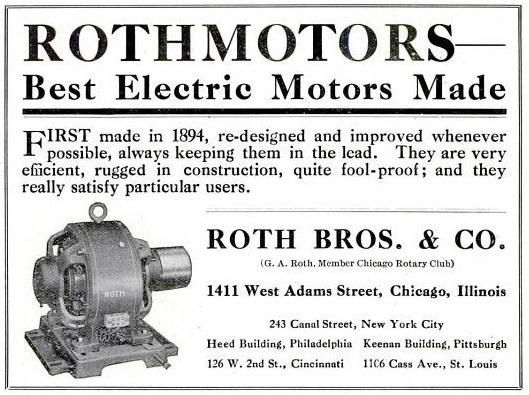Brue
Member
- Location
- Marysville, WA, USA

View attachment 23227If you can expand this photo you will see that the motor isn't as old as the one in the ad.
I can read the table.
Was the machine working? Is it new to this owner? No name plate mark to indicate single or three phase. Any idea? Is there a thermal reset button? Is there a capacitor mounted to motor?
Does it smell burned?
There is another interesting thing: the leads of the 38.6 Ohm winding when tested to the frame of the motor start at about 80 Ohms and build to about 150 Ohms over a ten second time period. Like charging an RC or LC circuit.
1 HP
230 V
4-5 >> .74 ohms
2-3 >> 38.5 ohms
1-6 >> open
1200 rpm - that's odd. An induction motor would be maybe 1185 rpm. 1 hp is really small for a synchronos motor and it is not three phase. Maybe listing the synchronous speed was the norm for that time.
No chance of finding the controller?
Without the controller, I'm guessing:
1 phase
4-5 run winding
2-3 start winding
1-6 centrifugal switch stuck open
Capacitor was in the controller.
And I'm thinking you already figured out to head to a motor shop..
Is that thing direct or belt driven? If it's belt and there isn't a need to keep it original the best thing to do is replace the motor.
If they wish to keep the machine in original condition check and see if there is a motor shop that will do a rewind and rebuild. They will mark those leads for you.
It's a gear train with the first stage of reduction bolted to the top of the motor. Very nice castings. But probably dried up oil. Getting the gears lined up upon reassemble could be interesting.
That behavior sounds more like a capacitor where the current will decrease as the cap voltage gets closer to the thevenin equivalent source voltage of the ohmmeter itself, because I=CdV/dt. The decreasing current and increasing voltage will make the measured resistance R=V/I go up at least initially until it reaches a steady state value equal to the actual ohmic resistance.
By contrast, the current in an inductor will increase with time because V=LdI/dt. Therefore the measured resistance R=V/I will go down at least initially until it reaches the series ohmic resistance of the inductor.
Thanks for that, I'll attempt to file it in my head for future reference. So would this indicate that there is in fact a capacitor inside the motor casing?
Shouldn't be any continuity from any lead to ground. So, yes that looks like a problem.
Your pictures are way too small to determine anything. How about some that are large and that show the motor from different angles? What you posted is mostly of the machine and you can hardly see the motor on the bottom.
-Hal


